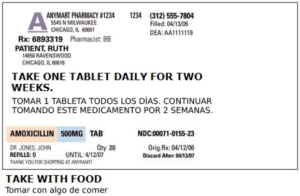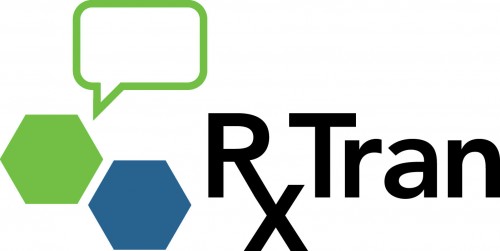Oregon Regulations
OREGON REGULATIONS OF SENATE BILL 689.564: LANGUAGE REQUIREMENTS FOR PRESCRIPTION LABEL TRANSLATIONS
OREGON REGULATIONS OF SENATE BILL 689.564: LANGUAGE REQUIREMENTS FOR PRESCRIPTION LABEL TRANSLATION
A few States, as well as New York City, have passed comprehensive pharmacy language access laws to ensure that community pharmacies provide free translation and interpreting services to their customers with limited English proficiency (LEP).
Below we describe informally and briefly the gist of some specific requirements enacted in the state of Oregon. This is not intended to be a complete or exhaustive description of the laws and regulations. It is not intended, nor should be relied upon, as a source of legal advice. Please consult qualified counsel for any questions regarding interpretation of any laws and regulations mentioned on this site.
The Oregon bill that relate to pharmacy language requirements is:
- ORS 689.564
ORS 689.564 Language requirements for prescription drug labels
Oregon Law ORS 689.564 went into effect on January 1, 2021 and required pharmacies to provide translation services in 14 languages as requested by a LEP patient. As the third state to pass such a law following California and New York, Oregon requires that the following languages be made available: Spanish, Russian, Somali, Arabic, Chinese (Simplified), Vietnamese, Farsi, Korean, Romanian, Swahili, Burmese, Nepali, Amharic and Pashto.
According to the Oregon Board of Pharmacy, approximately 222,000 residents, or more than 6 percent of Oregon residents are LEP. Oregon Senate Bill 689.564 requires that all pharmacies inform LEP patients via signage of their right to receive their prescription label in the aforementioned 14 languages.
(1)
The State Board of Pharmacy shall adopt rules to require that, if a patient is of limited English proficiency and the prescribing practitioner, patient or an authorized representative of the patient so requests, a prescription drug dispensed by a pharmacy bear a label in both English and in the language requested and, if authorized by the board by rule, include an informational insert in both English and the language requested. The rules adopted under this section must:
(a)
Define “limited English proficiency.”
(b)
Determine the pharmacies to which the requirements of this section apply, and include at least retail drug outlets and other drug outlets that dispense prescription drugs.
(c)
Determine for which prescription drugs it is appropriate to include an informational insert in addition to the label. In adopting rules under this paragraph, the board shall consider the complexity and length of the directions for use of the prescription drug.
(d)
(A) Require that labels and informational inserts be available in at least 14 languages other than English that are spoken in Oregon by individuals who are of limited English proficiency, as determined by the most recent American Community Survey from the United States Census Bureau and in consultation with the Oregon Health Authority and other necessary resources.
(B)
Require the board to reassess, and update as necessary, the languages described in this paragraph at least once every 10 years, in consultation with the authority and other stakeholders.
(2)
(a) A pharmacy may contract with a third party for the translation of the labels and informational inserts required under subsection (1) of this section.
(b)
A pharmacy, pharmacist or pharmacy intern that dispenses a prescription drug in compliance with the requirements of subsection (1) of this section may not be held liable for injuries resulting from the actions of a third party if the pharmacy from which the label or informational insert was dispensed entered into a contract with the third party in good faith, and the pharmacy, pharmacist or pharmacy intern was not negligent with regard to the alleged misconduct of the third party.
(3)
This section does not apply to an institutional drug outlet.
(4)
The board may adopt other rules as necessary to carry out this section.
(5)
The board shall, in consultation with the Oregon Health Authority, adopt rules to require that a pharmacy post signage to provide notification of the right to free, competent oral interpretation and translation services for patients who are of limited English proficiency. Rules adopted under this subsection must comply with any relevant federal laws and regulations. [2019 c.465 §2]Note: 689.564 (Language requirements for prescription drug labels) becomes operative January 1, 2021. See section 4, chapter 465, Oregon Laws 2019.
Meeting Oregon ORS 689.564 Regulatory Compliance
With states increasingly expanding the rights of LEP individuals, RxTran sought out to find a unique solution to the challenge of providing pharmacy language services for the LEP population. Working with pharmacists, computer scientists and computational linguists, RxTran developed unique, patent-pending software that enabled pharmacies to translate prescription label Patient Instructions “Directions for Use” or SIGs, which can be translated accurately, precisely, and instantaneously using RxTran’s software. You can print patient instructions / SIGs in any of the 14 languages required by Oregon ORS 689.564 directly onto the container label and the package inserts / CMI.
Pharmacists and physicians are used to entering Directions for Use for patients (SIGs) as free-text into their PMS software. They are understandably reluctant to spend more time entering SIGs in a structured way by using many clicks. With RxTran, pharmacists can continue entering Patient Instructions / SIGs into their Pharmacy Management System as free-form text. They can even use standard SIG Codes and abbreviations, such as bid (2 times a day), po (by mouth), q34h (every 4 hours), x7d (for 7 days), prn (as needed), etc.
Our system matches the sigs to tens of thousands of sig phrases we have already translated into the 14 languages required by Oregon ORS 689.564. The accuracy of these translations have been validated by professional pharmacists who are native speakers of the target language (the language they are translating into).
Currently, our system can translate your sigs into 26 languages: Amharic, Arabic, Armenian, Bengali, Burmese, Chinese (both Simplified and Traditional), Farsi, French, German, Greek, Haitian Creole, Hindi, Italian, Korean, Nepali, Pashto, Polish, Portuguese (for Brazil), Romanian, Russian, Somali, Spanish, Swahili, Tagalog and Vietnamese.
*Highlighted languages required by ORS 689.564
Pharmacies can use RxTran as a stand-alone web application or through any of more than a dozen of our partners’ Pharmacy Management Systems, such as En-Vision, PDX, McKesson, Rx30, etc., with which RxTran is fully integrated.
For More Information
To get more information about our pharmacy language services, call 617-621-0945 or email info@RxTran.com to find out how RxTran can help you provide a more comprehensive set of services to your pharmacy clients.
Legal Disclaimer
On this site we informally and briefly describe the gist of some laws and regulations enacted or being considered in various jurisdictions. These descriptions are not intended to be a complete or exhaustive presentation of the laws and regulations. They are not intended, nor should be relied upon, as a source of legal advice. Please consult qualified counsel for any questions regarding interpretation of any laws and regulations mentioned on this site.
Communicate In Your
Customers Language

Contact Us
"*" indicates required fields
